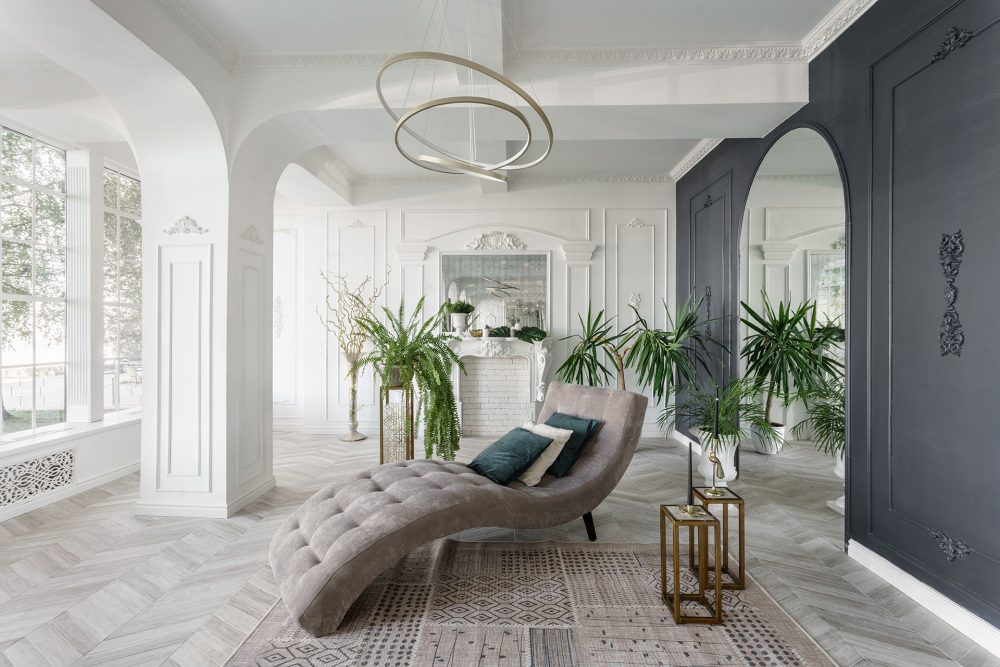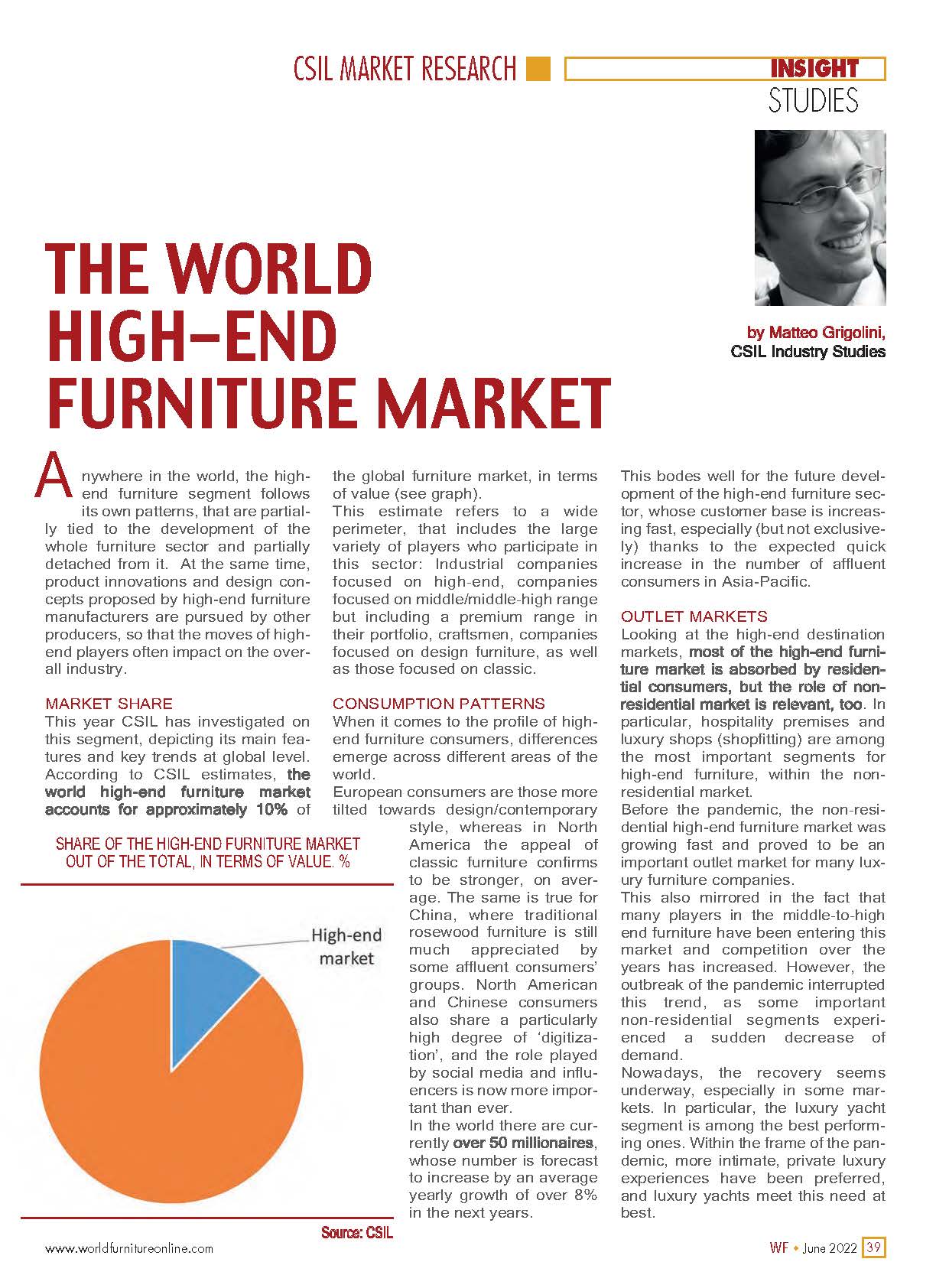The world high-end furniture market

Anywhere in the world, the high-end furniture segment follows its own patterns, that are partially tied to the development of the whole furniture sector and partially detached from it.
At the same time, product innovations and design concepts proposed by high-end furniture manufacturers are pursued by other producers, so the moves of high-end players often impact on the overall industry.
MARKET SHARE
This year CSIL has investigated on this segment in the report The world high-end furniture market (June 2022), depicting its main features and key trends at a global level.
According to CSIL estimates, the world’s high-end furniture market accounts for approximately 10% of the global furniture market, in terms of value. This estimate refers to a wide perimeter, that includes the large variety of players who participate in this sector: Industrial companies focused on high-end, companies focused on middle/middle-high range but including a premium range in their portfolio, craftsmen, companies focused on Design furniture, as well as those focused on the classic.
CONSUMPTION PATTERNS
When it comes to the profile of high-end furniture consumers, differences emerge across different areas of the world.
European consumers are those more tilted towards design/contemporary style, whereas in North America the appeal of classic furniture confirms to be stronger, on average. The same is true for China, where traditional rosewood furniture is still much appreciated by some affluent consumer groups.
North American and Chinese consumers also share a particularly high degree of ‘digitization’, and the role played by social media and influencers is now more important than ever.
In the world, there are currently over 50 millionaires, whose number is forecast to increase by an average yearly growth of over 8% in the next years. This bodes well for the future development of the high-end furniture sector, whose customer base is increasing fast, especially (but not exclusively) thanks to the expected quick increase in the number of affluent consumers in Asia-Pacific.
OUTLET MARKETS
Looking at the high-end destination markets, most of the high-end furniture market is absorbed by residential consumers, but the role of the non-residential market is relevant, too. In particular, hospitality premises and luxury shops (shopfitting) are among the most important segments for high-end furniture, within the non-residential market.
Before the pandemic, the non-residential high-end furniture market was growing fast and proved to be an important outlet market for many luxury furniture companies. This is also mirrored in the fact that many players in the middle-to-high-end furniture have been entering this market and competition over the years has increased.
However, the outbreak of the pandemic interrupted this trend, as some important non-residential segments experienced a sudden decrease in demand. Nowadays, the recovery seems underway, especially in some markets. In particular, the luxury yacht segment is among the best-performing ones.
Within the frame of the pandemic, more intimate, private luxury experiences have been preferred, and luxury yachts meet this need at best.
Want to know more? Please CONTACT US
